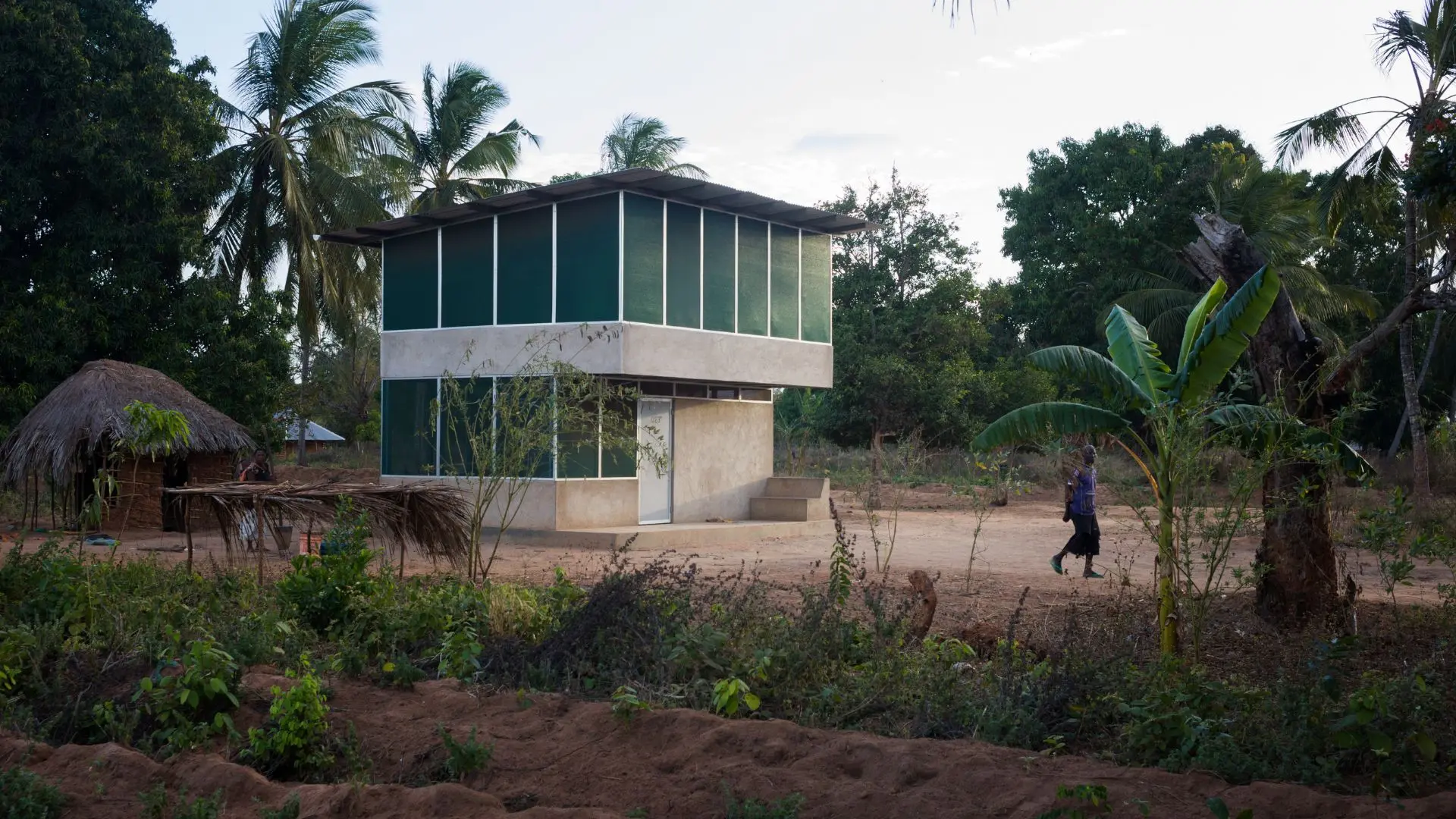View more

Today, approximately 1.1 billion people live in Sub-Saharan Africa, the region with the fastest-growing population globally. By 2050, this number is expected to double to 2.5 billion, according to the United Nations. While two-thirds of this growth will occur in urban centers, around 460 million new residents will live in rural areas, requiring an estimated 90 million new rural homes. The Star Homes project, a bold interdisciplinary initiative based in Tanzania, suggests that the way we build these homes could influence far more than just comfort—it could improve public health on a large scale.
Launched over a decade ago, the Star Homes project is the result of collaboration between architects, public health researchers, and entomologists. Their shared goal is to create low-cost, sustainable, and healthy housing for rural families in Sub-Saharan Africa. The team constructed 110 identical, insect-proof homes across 60 villages in Mtwara, a southern Tanzanian region with high rates of malaria, respiratory illness, and diarrhoeal disease.

Traditional rural houses in hot, humid Africa are often built in ways that inadvertently worsen health outcomes: thick walls trap heat, making it uncomfortable to sleep under mosquito nets; ground-level bedrooms and poor ventilation create ideal conditions for disease transmission.
Jakob Knudsen and Lorenz von Seidlein, two of the project’s leaders, observed that the typology of rural housing in hot-humid Asia differs significantly, despite being in the same climate zone. “Throughout Southeast Asia we encountered elevated, light, air-permeable structures frequently made of bamboo, often on stilts. In contrast, we virtually never encountered elevated or double-storey homes in rural Africa. Instead, traditional homes tended to have an earth floor, wattle and daub walls, and thatched roofs, increasingly replaced by corrugated iron,” they explain.
Starting with field observations across Thailand, the Philippines, Gambia, and Tanzania, by 2015, the team had constructed six prototype homes in Magoda, a village in northeast Tanzania. Jakob Knudsen – principal of Ingvartsen Architects and Dean at the Royal Danish Academy of Architecture, Design, and Conservation – designed six homes: three elevated single-storey and three double-storey buildings, clad in shadenet, timber, or bamboo.
The double-storey shadenet version proved the most effective at reducing indoor heat and mosquito entry. Since the primary malaria vectors in Sub-Saharan Africa – Anopheles gambiae and funestus – tend to fly near the ground, elevation provides natural protection. Additional features such as rainwater collection tanks, ventilated pit latrines, and washable surfaces further improve hygiene and reduce exposure to disease.

However, a few prototypes weren’t enough to generate robust data. To assess the health impact with statistical reliability, the researchers determined they needed 110 newly designed Star Homes and 440 traditional houses for comparison, based on the assumption of three children per household, allowing for tracking of malaria, respiratory infections, and diarrhoea.
“We relocated to Mtwara district in southeastern Tanzania, bordering Mozambique, to ensure a sufficiently high malaria prevalence, which had decreased in northeastern Tanzania. Additionally, there were no competing development projects in Mtwara. The name ‘Star Homes’ turned out to be the most popular for the new designs,” explain Knudsen and von Seidlein. Families with children under 13 were invited to participate via an open lottery. Health surveillance began in mid-2021 and continued for three years.

The rollout, however, wasn’t without challenges. “Unexpectedly, few families moved permanently into their new homes. Only some family members slept in the homes, and only on certain days. Eleven families refused to move in at all,” the team writes in a letter from the field. In communities unfamiliar with research, rumors spread (some as extreme as suggesting the houses were part of secretive rituals). To restore trust, the team embedded themselves in the villages, organized football tournaments, and even produced a radio play to explain the project. By late 2021, all homes were occupied and data collection could finally begin.

Although the final report has not yet been officially published, preliminary results indicate a 30–40% reduction in malaria among children living in the Star Homes. Moreover, children under five have shown improved growth, and indoor mosquito abundance has decreased by 50%.
Beyond health, the Star Homes also provide strong environmental benefits. Using BIM modeling, the team calculated that each home consumes 37% less embodied carbon, 40% less embodied energy, and 70% less concrete than standard rural homes. “If even a small proportion of the 90 million rural homes needed by 2050 adopt similar principles,” the researchers note, “the environmental savings could be massive.”
기사원문링크>
https://designwanted.com/malaria-star-homes-project-sub-saharan-africa/